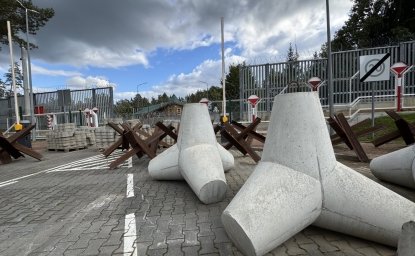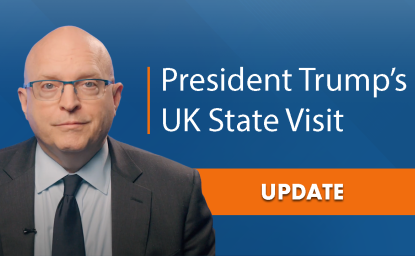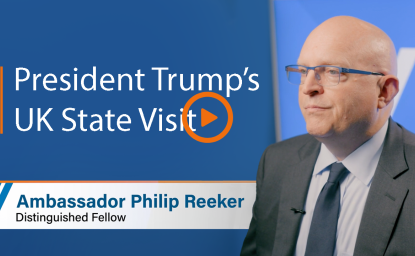Defense of the homeland must be the core of our national security strategy. We have made much progress in securing the homeland since 9/11, but there is much more that needs to be done – by the federal government, state and local governments, and the private sector.
Let me focus my remarks this morning on the implementation of the Department of Homeland Security, some of the particular challenges before us, and how cooperation between the public and private sector is essential to homeland security.
Progress and Problems
Let me begin by reviewing what has been achieved. We are safer than we were on 9/11. We have:
-- Created the Department of Homeland Security (DHS) to coordinate twenty-two federal agencies, and federal-state-local and public-private cooperation;
-- Invested billions of dollars at the federal, state, local and private level;
-- Performed several major drills in preparation for terrorist attacks and attacks with WMD;
-- Enhanced aviation security through the creation of the Transportation Security Administration (TSA), expanded passenger screening, and the deployment of air marshals;
-- Increased security at nuclear power plants, including $400 million in upgrades;
-- Tightened border security by establishing tougher monitoring rules, and closer coordination with Canada and Mexico;
-- Increased public awareness of threats and established the “Ready” system to educate and prepare the public for terrorist attacks;
-- Prepared for bioterror by stockpiling over a billion doses of drugs and vaccines to counter biological agents, and making progress on getting $6 billion in research and development through Project BioShield;
-- Created the Terrorist Threat Integration Center (TTIC) to pool intelligence resources and analyze threats;
But much more remains to be done. We are faced with several apparent problems:
-- Many first-responders are under-funded and lack the protective gear to respond to an attack with WMD;
-- Prioritizing resource allocation has been lacking, as major population centers and likely targets have received proportionally less than other areas;
-- State and local law enforcement lack access to terrorist watch-lists;
-- Ports are not secure, as only 2% of the 6 million containers entering our ports in 2002 were inspected;
-- Much of our critical infrastructure is not secure, notably our chemical plants. The recent blackout revealed the vulnerability of our nation’s power grid;
-- The emerging threat of shoulder-fired missiles has yet to be effectively addressed;
-- and questions persist about intelligence capabilities, and the color-based threat assessments that have often generated panic without providing guidance.
We are preparing well for the attacks that have occurred – hijackings, anthrax. But we need to prepare better for the attacks that might come – particularly those involving WMD and those that could severely impact our critical infrastructure.
Preparation varies from issue to issue. Let me say a few words about the Department of Homeland Security, and the specific challenges of critical infrastructure protection, border security, bioterror, and public warning.
DHS – Organization and Implementation
The implementation of the Department of Homeland Security is the biggest reorganization of the federal government in my lifetime. It includes:
-- twenty-two federal agencies;
-- 170,00 employees
-- a budget of $36.2 billion;
-- and divisions devoted to borders and transportation; emergency preparedness and response; information analysis and infrastructure protection; and science and technology.
Perhaps more awesome than the reorganization is the Department’s mission: to prevent, protect against, and respond to terrorist attacks.
Government reorganization is often a way of avoiding problems, but in this case DHS is a good answer to the problems of coordination – between federal agencies, between Washington and state and local governments, and between the public and private sectors.
But the homeland will not be secured by moving around boxes on an organizational chart. Implementation is key and management is key. We must not spend so much time thinking about reorganization that attention is diverted from the day-to-day work of protecting the homeland.
There are several areas that will be essential to the Department’s implementation:
-- 1) Resources. DHS must receive the funding to do its job – there is no higher priority than protecting the American homeland. Particularly in the area of training and equipping first-responders, DHS needs sustained – and probably more – resources.
-- 2) Coordination. DHS agencies will compete for resources; state and local governments will want more money; and the private sector will try to balance security with efficiency, expense and reliability of transport. Balancing these competing interests will take management virtuosity and sustained cooperation.
-- 3) Intelligence. Already there are questions about whether DHS has the intelligence capability to provide threat assessments and actionable information. Much will depend on the implementation of TTIC and its relationship to DHS. Questions persist about information-sharing in the intelligence community, and access to classified information – for DHS, state and local governments and the private sector.
-- 4) The Congress. An effective working relationship with Congress on oversight, consultation and appropriation must be established. A key question is whether or not Congress will create a permanent Committee on Homeland Security.
-- 5) The President. Radical organizational change in the executive branch can only succeed with presidential support. The President must devote the time and prestige to ensure that implementation succeeds.
-- 6) Priorities. In all that DHS does, it must set clear priorities. There are limitless terrorist targets and methods. We cannot eliminate all risks. Prioritizing is an absolute necessity – we need to get the right resources to the right people at the right time.
We must be cost-effective, and we should aim to get other benefits from our investments – for instance a better system of public health. It is vital that we succeed – failure is not an option.
Critical Infrastructure
Let me now turn to some specific areas in which we will be put to the test.
Protecting critical infrastructure is essential to our physical security and economic security. Many targets could – if hit – deal a terrible blow to the American people or economy: chemical plants, nuclear plants, transportation and mass transit, pipelines, power grids, and water systems, just to name a few.
We have made some progress – public and private threat and vulnerability assessments are ongoing, and new protections are being implemented. But much more needs to be done.
Effective public-private cooperation is essential. 85% of the nation’s critical infrastructure is privately owned. The challenge is enhancing security while enabling business and commerce to proceed efficiently.
Both the public and private sectors need to do more:
-- Assessment: DHS must form a comprehensive national threat and vulnerability assessment of our nation’s critical infrastructure. This depends upon cooperation from the private sector, as businesses must provide frank assessments of their own vulnerabilities;
-- Information-Sharing: Information must be shared on threats and risk assessments. More efficient systems of disseminating intelligence to the private sector should be explored, including the sharing of classified information;
-- Incentives: Targeted incentives and assistance should be provided to owners and operators that undertake security upgrades.
-- Regulation: And, when necessary, higher standards for security must be made mandatory through government regulation.
It is in the interests of businesses that they do more to protect themselves, and it is in the interest of the government to help the private sector succeed. Communication is key – sharing information, setting standards, and coordinating plans.
Government must respect the limitations of what businesses can do, in terms of resources and security measures. But if we prioritize based upon the greatest risks and most vulnerable areas, we can enhance security in a cost-effective manner. Meanwhile, a more secure infrastructure will have many complimentary benefits, such as safer chemicals at our plants, or a more efficient power grid.
Borders
Another primary area of concern is border security.
Monitoring the millions of people and trillions of dollars in goods that cross our borders is a monumental challenge. The process involves intelligence, inspection, industry-government partnerships, a well-trained public and private workforce, and sophisticated systems to exchange mountains of data.
The U.S. has a proud tradition of openness – to foreign visitors and international commerce. But for years efficiency has trumped security. We should not close our borders or put up excessive barriers, but we must improve our monitoring capacity. One al Qaeda terrorist or one container with WMD is all it takes to inflict horrible damage.
People: Increased monitoring of foreign visitors is already underway. DHS’s US VISITS program establishes a new entry-exit system; visa requirements are tighter; and Customs and Border patrols have consolidated their efforts.
But we must ensure that legitimate travelers and immigrants are permitted entry. The foreign businesspeople, students and scientists who contribute much to the economy and diversity of our nation must be welcomed. Businesses, universities and research centers can ensure that this is the case through efficient cooperation with DHS and the State Department.
Goods: Similarly, there must be enhanced monitoring of goods. The container-transport industry is vast and vital to the American economy. But only 2% of 6 million maritime containers entering the U.S. were inspected in 2002. This is unacceptable. We should:
-- extend border controls towards the point of origin, as we have begun doing – our shores should be the last line of screening, not the first;
-- hold foreign exporters and governments to stricter requirements regarding the security of goods entering the U.S. – they should supply detailed, verifiable information about the contents of containers;
-- increase the advance warning of ships entering U.S. ports, and have ships file their crew and cargo manifest earlier;
-- establish a reliable “chain of custody” for cargo, involving the Coast Guard, Customs and maritime inspectors to ensure that containers are not tampered with;
-- increase resources for the strained Coast Guard;
-- and funnel as many containers as possible through approved and prepared gateways.
The private sector will demand efficiency in the regulation of commerce, as it should. American business depends upon reliability and speed of delivery.
But some increased regulation is a necessity. When it comes to the possibility of terrorists delivering WMD in a container, the stakes are simply too high. Bringing law to the largely lawless seas is vital to DHS’s mission to protect our homeland.
Bioterror
Preventing and preparing for bioterror must be another central mission.
We have stockpiled vaccines and antibiotics, and Project BioShield provides incentives for the pharmaceutical industry to develop new medicines. We are also researching and deploying technologies to detect biological agents in the event of an attack.
But improvements can be made in our preparation and our system of public health. We need to enhance our understanding of the science of bioterrorism, and we must improve the capability of federal, state and local governments to respond to a bioterror attack.
We should:
-- increase public awareness of the threat of bioterror and what to do in the event of an attack;
-- continue to stockpile vaccines and antibodies while researching new capabilities;
-- redouble stalled efforts to inoculate emergency responders against smallpox to enable an effective response to an attack;
-- pursue new technologies to detect and provide early-warning of a biological attack;
-- and participate in international regimes to restrict the development of biological weapons.
Again, there is a clear need for effective public-private partnership. Much of the expertise in these areas is in the private sector. Incentives like Project BioShield capitalize on that expertise, and we should explore other ways to tap into the capability of the private sector through research and development.
Terrorists are researching ways to strike us – we must be researching ways to counter them. Merely focusing on known weaponized agents like anthrax and smallpox is not enough. We must comprehensively improve our system of public health so that we can detect and respond to bioterror promptly. New and better drugs and a more informed public will benefit us even in the absence of an attack.
Public Warning
There is still great uncertainty about the threat of terrorism. The best defense against terrorism is an informed American public.
We have only recently entered a new era – DHS is just up and running; first-responders are adjusting their methods of preparation; businesses are becoming acquainted with new security standards; and the American people are learning about terror and how to respond to it.
To be sure we have had growing pains. The color-code threat assessment have sometimes generated more panic than preparation – often state and local governments, businesses, and citizens do not know what to do.
The government can minimize confusion and improve preparation by:
-- disclosing what is known and not known;
-- describing what is being done to address problems and threats;
-- sharing information amongst its own agencies, state and local governments, and the private sector;
-- and recommending specific steps that people and industries can take to protect themselves.
Conclusion
To succeed, homeland security must be a comprehensive national effort.
There will be hard choices and difficult challenges. In a government of the people and a free market, people must make sacrifices to defend themselves. At the same time, we must respect the freedoms that we are defending – openness, tolerance, and commerce.
The balance between security, freedom and efficiency will be a hard one to strike. The government cannot achieve this balance on its own, nor can the private sector. They must work together and with the American people.
In my lifetime, America has faced two definitive challenges to its security – World War II and the Cold War. In both cases government and the private sector came together, and we succeeded because of that cooperation.
Now we are faced with a new challenge in the form of catastrophic terrorism. We can never achieve perfect security. But if we set clear priorities, maintain our commitment, and have sustained cooperation, we can face down the threats of the 21st century as ably as we did the threats of the 20th.



